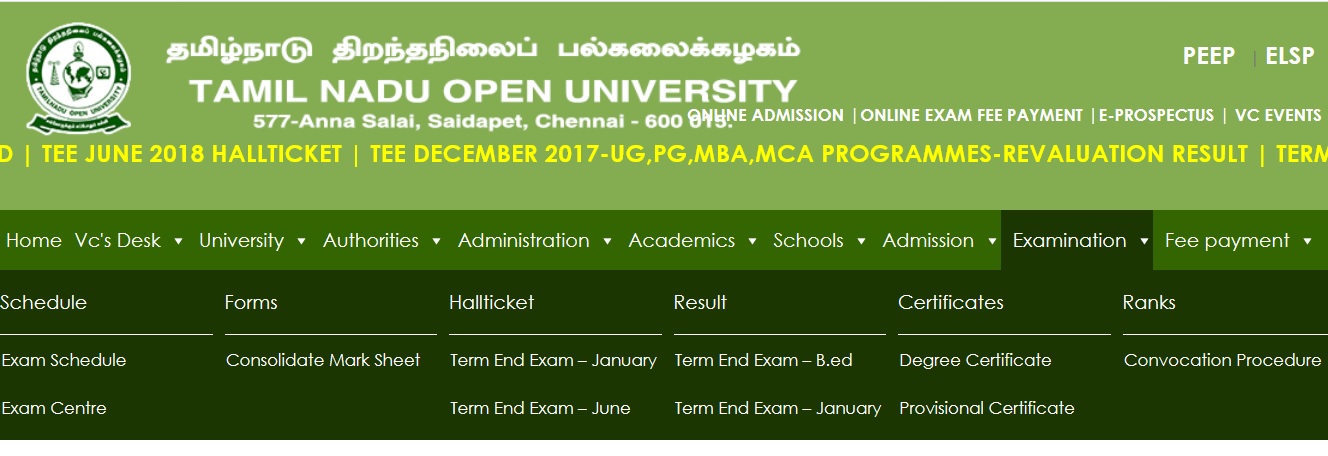Accounting For Managerial Decision BCom Question Paper : tnou.ac.in
University : Tamil Nadu Open University
Degree : B.Com
Department : Accounting and Finance
Year : III
Subject : Accounting For Managerial Decision
Document Type : Question Paper
Website : tnou.ac.in
Download Old/ Previous Question Papers : https://www.pdfquestion.in/uploads/7937-ug863-baf35.doc
TNOU Accounting For Managerial Decision Sample Question
B.Com. Degree Examination :
JANUARY 2012 :
Third Year
Accounting and Finance :
Accounting For Managerial Decision
Time : 3 hours
Maximum marks : 75
Related / Similar Question Paper :
TNOU B.Com Cost Accounting Question Paper
SECTION A
Answer any THREE questions :
1. What do you mean by management accounting? Explain.
2. Explain the limitations of financial statement analysis.
3. Distinguish funds flow statement from cash flow statement.
4. From the following particulars calculate stock turnover ratio.
(a) Opening stock Rs. 40,000
(b) Closing stock Rs. 44,000
(c) Sales Rs. 4,15,000
(d) Gross profit ratio 20%.

5. Calculate funds from operation from the following profit and loss a/c. Profit and Loss acccount
Dr. Cr.
Rs. Rs.
To Rent 10,000 By Gross profit 9,86,000
To Salary 25,000
To Depreciation 3,000
To Discount on shares 10,000
To Goodwill 5,000
To Preliminary exp. 6,000
To Net Profit 9,27,000
SECTION B
Answer any FOUR questions :
6. What are the uses and limitations of Management Accounting?
7. From the following balance sheet calculate solvency ratios.
Balance sheet :
Liabilities | Rs. | Assets | Rs. :
Equity share capital 1,00,000 Land 75,000
Reserves 50,000 Plant 80,000
Profit and loss a/c 20,000 Stock 30,000
10% debentures 50,000 Debtors 50,000
Creditors 30,000 Bills receivable 20,000
Bills payable 15,000 Cash in hand 10,000
2,65,000 2,65,000
8. Balu and company presents the following balance sheets for the 2008 and 2009. Prepare sources and application of funds statement.
Balance sheet :
Liabilities | 2008 | 2009 | Assets | 2008 | 2009 :
Rs. Rs. Rs. Rs.
Share capital 12,00,000 12,00,000 Cash 1,06,000 62,000
Reserves 13,84,000 17,28,000 Investments 1,74,000 –
Loans 2,00,000 4,70,000 Debtors 6,92,000 10,56,000
Creditors 8,26,000 12,54,000 Stock 8,64,000 13,66,000
Bills payable 4,52,000 6,28,000 Net fixed assets 22,26,000 27,96,000
40,62,000 52,80,000 40,62,000 52,80,000
Depreciation of Rs. 3,78,000 is written off in the year 2009.
9. Dhandapani Ltd. furnishes the following balance sheet for the years 2007 and 2008, prepare common size balance sheet.
Balance sheet :
Liabilities | 2007 | 2008 | Assets | 2007 | 2008 :
Rs. Rs. Rs. Rs.
Share capital 2,00,000 3,00,000 Building 4,00,000 4,00,000
Reserves 6,00,000 7,00,000 Machinery 6,00,000 10,00,000
10% debentures 2,00,000 3,00,000 Stock 2,00,000 3,00,000
Creditors 3,00,000 5,00,000 Debtors 2,00,000 2,50,000
Bills payable 2,00,000 2,00,000 Cash at bank 1,00,000 50,000
15,00,000 20,00,000 15,00,000 20,00,000
10. Prepare cash flow statement from the following balance sheet.
Balance sheet :
Liabilities | 2009 | 2010 | Assets | 2009 | 2010 :
Rs. Rs. Rs. Rs.
Capital 80,000 71,000 Land & Building 70,000 1,00,000
Bank Overdraft 60,000 96,000 Machinery 35,000 20,000
Creditors 42,000 60,000 Stock 40,000 58,000
Outstanding expenses 8,000 13,000 Debtors 30,000 40,000
Cash 15,000 22,000
1,90,000 2,40,000 1,90,000 2,40,000
During the year 2010, a machine costing Rs.11,000 (accumulated depreciation thereon Rs. 3,000) is sold for Rs. 4,000. The accumulated depreciation of machinery was Rs. 8,000 on 31.12.2009 and Rs. 12,000 on 31.12.2010.
11. Prepare cash budget from the following data for three months from April to June 2010.
Months | Sales | Purchases | Wages :
Rs. Rs. Rs.
February 2010 1,80,000 1,24,800 12,000
March 2010 1,92,000 1,44,000 14,000
April 2010 1,08,000 2,43,000 11,000
May 2010 1,74,000 2,46,000 10,000
June 2010 1,26,000 2,68,000 15,000
(a) 50% of the sale is for cash. Credit sale amount is collected in the month of following that of sale.
(b) Suppliers supply goods on two months credit.
(c) Delay in payment of wages 15 days.
(d) Income tax of Rs. 10,000 is due in June 2010.
(e) Cash at Bank on 1st April Rs. 25,000.
12. Janaki products Ltd. has two projects under consideration, the cost of each of them is Rs. 1,00,000. Both the projects have to be depreciated on straight line method basis and tax rate may be taken as 50%. Determine which project is better on pay back period criterion.
1st year 2nd year 3rd year 4th year 5th year
Project A Cashflows 80,000 60,000 40,000 20,000 10,000
Project B Cashflows 20,000 40,000 60,000 80,000 1,00,000
Cost Accounting :
Time : 3 hours
Maximum marks : 75
PART A : (3 * 5 = 15 marks)
Answer any THREE questions :
1. What are elements of cost?
2. What is meant by apportionment of overheads?
3. Write short notes on Labour Turnover.
4. From the following information determine E.O.Q.
Annual usage = 90,000 units
Cost per unit = Rs. 50
Buying cost per order = Rs. 10
Cost of carrying inventory = 10% of cost.
5. Sales Rs. 4,00,000
Variable cost Rs. 3,00,000
Fixed cost Rs. 40,000
What is the P/V ratio?
PART B : (4 * 15 = 60 marks)
Answer any FOUR questions :
6. Explain the causes for reconciliation of cost and financial books.
7. Two materials X and Y are used as follows :
Minimum usage – 50 units per week each
Maximum usage – 150 units per week each
Normal usage – 100 units per week each
Ordering quantities
X – 600 units Y – 1,000 units
Delivery period X – 4 to 6 weeks
Y – 2 to 4 weeks.
Calculate for each material.
(a) Minimum level
(b) Maximum level
(c) Ordering level
(d) Average stock level.